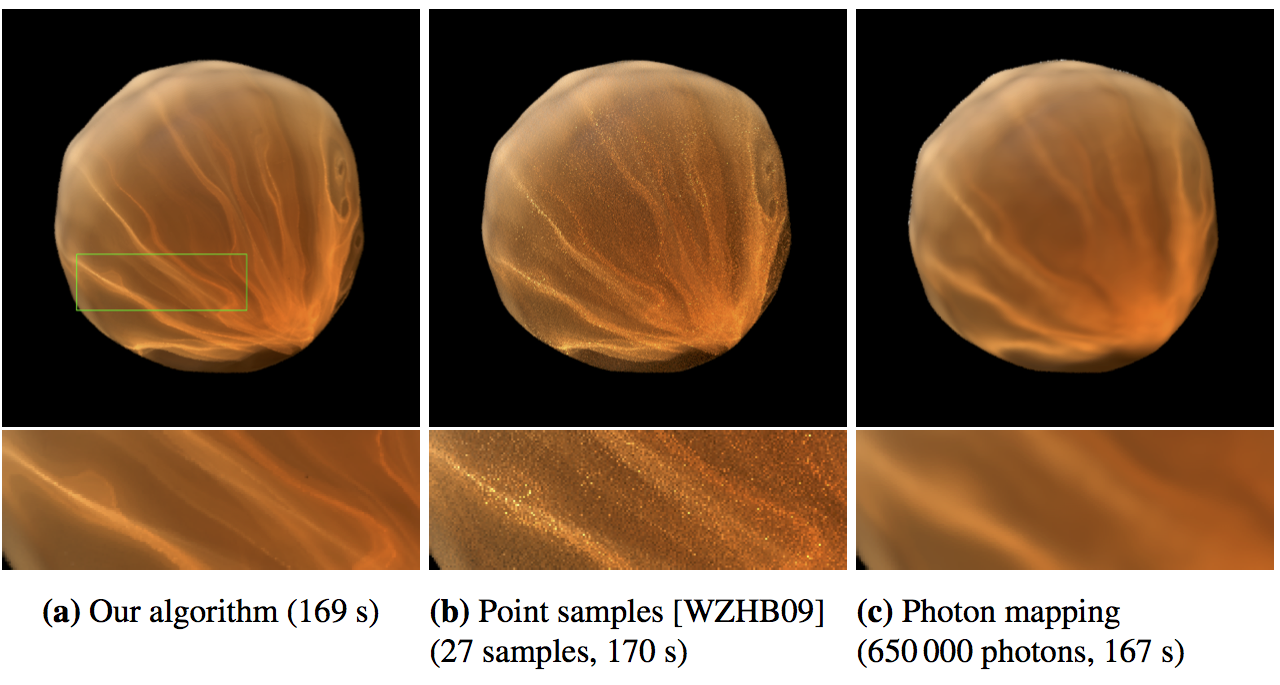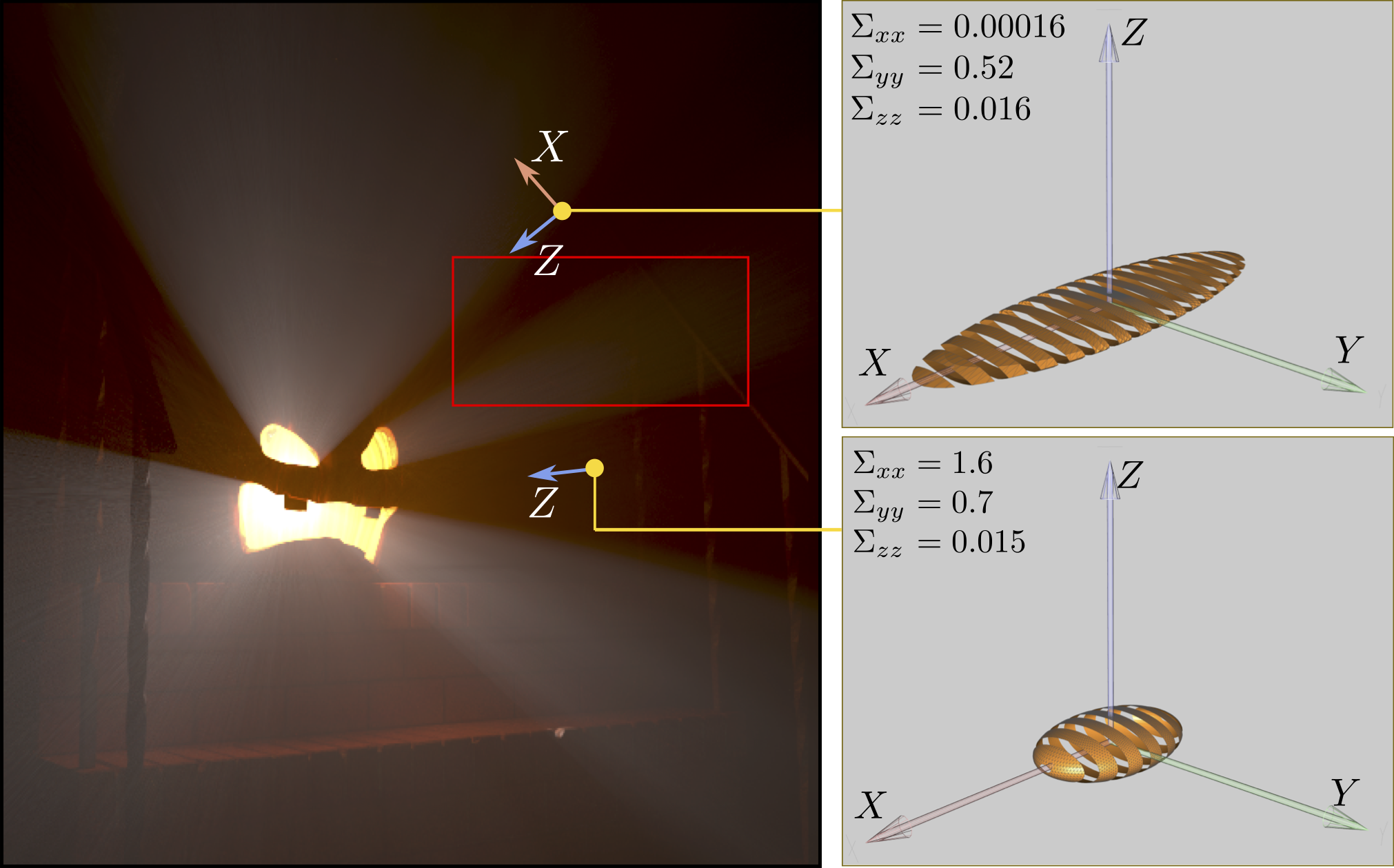Section: New Results
Realistic rendering
Note that Cyril Soler defended his HDR “Models and Analyses for Image Synthesis”, Université Joseph-Fourier, on June 2014.
Single Scattering in participating media with refractive boundaries
Participant : Nicolas Holzschuch [contact] .
|
Volume caustics are high-frequency effects appearing in participating media with low opacity, when refractive interfaces are focusing the light rays (see Figure 13 ). Refractions make them hard to compute, since screen locality does not correlate with spatial locality in the medium. We have developed a new method for accurate computation of single scattering effects in a participating media enclosed by refractive interfaces. Our algorithm is based on the observation that although radiance along each camera ray is irregular, contributions from individual triangles are smooth. Our method gives more accurate results than existing methods, faster. It uses minimal information and requires no precomputation or additional data structures. This paper was accepted for publication at Computer Graphics Forum [11] .
A Local Frequency Analysis of Light Scattering and Absorption
Participants : Laurent Belcour, Kavita Bala, Cyril Soler [contact] .
We proposed a novel analysis of absorption and scattering of local light fields in the Fourier domain in the neighorhood of light paths. This analysis aims at predicting the changes over the distribution of light energy, so as to allow efficient sampling and integration methods of diffused light in participating media. Our analysis explains that absorbtion increases frequency since it acts as a continuous visibility mask over the local light field, and that scattering lowers frequencies as it operates a low pass convolution filter in the directional domain. In order to combine this analysis with our previous work on covariance tracing—and therefore use it to improve existing algorithms for path tracing in participating media—we derived new sampling metrics all based on a common prediction of the 3D covariance of the fluence in the volume. We demonstrate indeed that the covariance of the fluence can efficiently be computed by combining the 4D covariance matrices of light fields in the neighborhood of light paths, and that it can be used to compute effective metrics (1) for the variance of energy collected along camera rays, (2) for determining the shape and size of reconstruction kernels in screen space, and (3) for drastically improving the convergence of density estimation methods. For the later, we propose an improvement of the method of Progressive Photon Beams. This work has been published in ACM Transactions on Graphics and presented at Siggraph'2014 in Vancouver [5] .




